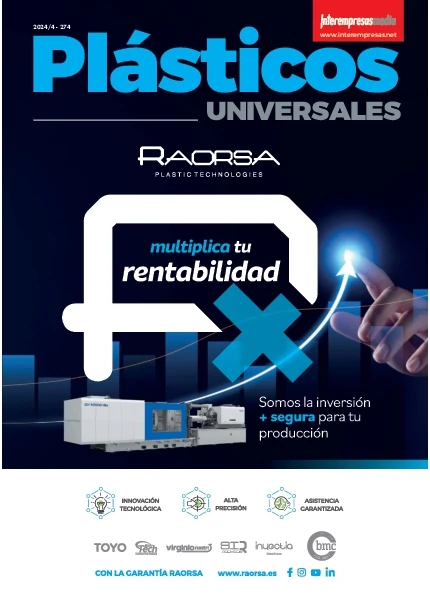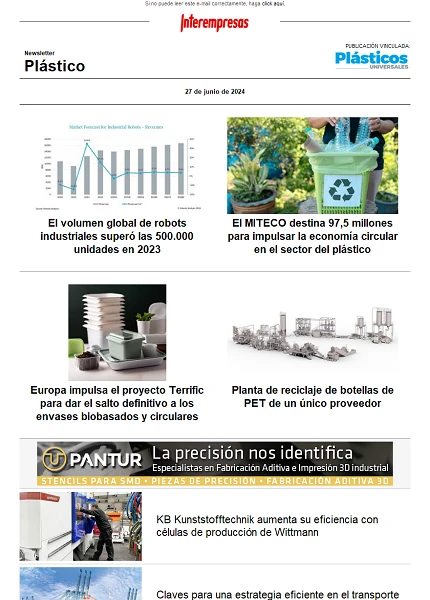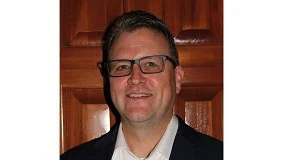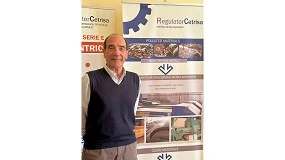This news article was originally written in Spanish. It has been automatically translated for your convenience. Reasonable efforts have been made to provide an accurate translation, however, no automated translation is perfect nor is it intended to replace a human translator. The original article in Spanish can be viewed at Moldes para series directamente del CAD (parte 2)
Moulds for series directly from CAD (part 2)
15/10/2002
Recent developments in DMLS
The effort of r & d carried out in the DMLS system, materials and the process has reversed in successive improvements year after year since the introduction of the technology. Departmental organization changed since the end of the year 2000 when EOS acquired the development group of materials which formally worked for Rapid Product Innovations and Electrolux Rapid Development in Finland. EOS-Finland was founded in December 2000 and now this subsidiary company continues r & d and supplements EOS resources especially in the improvement of the DMLS.
Developments in the system
The first generation of the DMLS system was introduced on the market in 1994. The main area of application was the production of inserts for prototype moulds and, usually, for small series.
The selection of material for this system was limited to bronze-based powder (DirectMetal'). In 1998 a new generation of systems, EOSINT M250 Xtend, was introduced to the market together with dust from steel (DirectSteel'50). The system underwent various improvements to mechanics, optics and software. All these new elements have been designed so that they can be installed as updates on older machines.
The selection of material for this system was limited to bronze-based powder (DirectMetal'). In 1998 a new generation of systems, EOSINT M250 Xtend, was introduced to the market together with dust from steel (DirectSteel'50). The system underwent various improvements to mechanics, optics and software. All these new elements have been designed so that they can be installed as updates on older machines.
Developments in the software
The basic principle of the scanning laser is creating a line of contour of the area of the cross-section (detour) first and then fill the internal areas of this outline with a vector scanning (lattice). The process of EOS software has been designed so that several different parameters can be changed to obtain optimal properties of the material and the best accuracy. For example the speed of detour and contour compensation can adjust numerically to make an internal offset in a tour of contour. The offset of detour is usually half the size of effective beam when there is no need to make polished later. New exhibition strategies for lattice, have been developed in order to optimize the speed of processing and material properties as well. Thermal tensions generated during the process have been also considered and reduced by means of these new strategies. The layers are divided into small areas (slots and tables) that can be swept so that controlled the thermal gradients and introduced thermal tensions.
Since June of this year there is a new update of the software for all new EOSINT M systems. The M250 PSW v3.0 contains several elements that increase the benefit of the client. It's a completely new software that offers better functionality and ease of use. It is a program of modular type that includes the control (PSW) program as well as connections to specific hardware of the system (HWI). All existing systems type EOSINT M can be upgraded with the new software.
Since June of this year there is a new update of the software for all new EOSINT M systems. The M250 PSW v3.0 contains several elements that increase the benefit of the client. It's a completely new software that offers better functionality and ease of use. It is a program of modular type that includes the control (PSW) program as well as connections to specific hardware of the system (HWI). All existing systems type EOSINT M can be upgraded with the new software.
Developments in the material
The project of development of the material that would give origin to the commercial powder DirectSteel'20 was completed successfully in early 2001. The new dust is available to users of EOS from the summer of 2001. The main features of the new dust DirectSteel'20 are:
• Very fine particle size that allows that the layers and the sintered made of 20 mm.
• Optimum particle size distribution to obtain good density and good behavior in the re-capado.
• Optimized composition of the powder to get good properties (density, resistance and hardness) material and especially to achieve good dimensional accuracy.
• Behaviour of the melting and sintering controlled allowing more stable process conditions.
The properties of the sintered with DirectSteel'20 pieces are:
• Very good surface quality compared with previous materials.
• Resolution and improved accuracy of details.
• Dense microstructure.
And for those who want to be faster, the r & d of EOS Department developed an additional metal dust to build layers of 20 mm. DirectMetal'20 allows faster speeds of construction with the same precision and resolution of details.
• Very fine particle size that allows that the layers and the sintered made of 20 mm.
• Optimum particle size distribution to obtain good density and good behavior in the re-capado.
• Optimized composition of the powder to get good properties (density, resistance and hardness) material and especially to achieve good dimensional accuracy.
• Behaviour of the melting and sintering controlled allowing more stable process conditions.
The properties of the sintered with DirectSteel'20 pieces are:
• Very good surface quality compared with previous materials.
• Resolution and improved accuracy of details.
• Dense microstructure.
And for those who want to be faster, the r & d of EOS Department developed an additional metal dust to build layers of 20 mm. DirectMetal'20 allows faster speeds of construction with the same precision and resolution of details.
Developments in the implementation
Despite the fact that greater implementation so far has been the rapid manufacturing of tooling, injection moulds for still other potential applications. One of them is the injection pressure of light as aluminium or magnesium alloys, and promising results have been achieved with zinc alloys. Recently invested great efforts to develop this type of application to respond to the needs of different clients in this field. EOS has made several attempts to cast injected together with its partners to test and develop the technology to be successful also in rapid manufacturing of molds for production of pieces of zinc, magnesium and aluminium. At this level of technological development pressure injection tests results have been promising and attest that the molds made by DMLS working also in conditions extremely harsh of process, as the subject in not only from aluminum but also of zinc and magnesium injection. In test results have been obtained series around 500 cycles for each material and the quality of the castings was similar to that obtained with casts of production in the majority of cases.
The rapid manufacturing of parts and components final (DirectPart') for different purposes is also an area of growing interest, but still not it has been widely exploited. They carried out several projects pilots successfully, mainly in the automotive sector
The rapid manufacturing of parts and components final (DirectPart') for different purposes is also an area of growing interest, but still not it has been widely exploited. They carried out several projects pilots successfully, mainly in the automotive sector
Conclusions
The line to move ahead in rapid manufacturing is to implement the DMLS technology in production to large series of injection, or not only for prototypes or small series. Since the quality of the sintered components is improving, application area where it can be used also increases. The DMLS technology already has been used in projects of molding injection commercial and real up to more than 100,000 cycles. The limitations of the technology have been reduced by the intense work of r & d and therefore, even the most demanding applications, such as the injection of aluminium, can be found now much better than one or two years ago. The direct manufacture of components such as products personalized or individualized, artworks and other consumer goods, or industrial, are other fields that are gaining interest and growing considerably.
Related Companies or Entities
EOS GmbH - Electro Optical Systems


































